Measuring Social Media Success: Insights from Industry Professionals
Are you wondering how to measure social media success? Check this guide, which includes tips, metrics, and tools for enhancing your reports.


Defining social media success is not that easy.
It's all too easy to fall into the trap of chasing what looks like success (more likes, more followers, more views), without ever stopping to ask if the metrics are even aligned with your business goals.
That's why we asked 11 experts to share their expertise for measuring social media success.
The result?
We break down how to define, track, and optimize social media strategies, so you can stop guessing.
Key takeaways
-
How to define social media success: Social media success should be defined by strategic objectives—not vanity metrics—focusing on business outcomes like awareness, leads, or retention.
-
Design success-focused reporting: To demonstrate real value, build executive-level reports that blend real-time metrics with historical trends, turning raw data into actionable business insights.
-
How to evaluate success based on different business goals: Evaluating success requires aligning metrics with specific business goals—whether boosting awareness, generating leads, driving sales, or fostering community—and benchmarking performance against competitors.
-
How to pptimize your strategies to reach social media success: Use data-driven insights to test, refine, and scale high-performing content, uncovering patterns that guide sustainable growth and engagement.
How to define social media success: go beyond traditional metrics
Before you can track or report on success, you need to define what it means. What counts as a win on social media for your brand depends entirely on your brand’s unique goals.
Defining social media success matters because:
- It aligns content with business goals. Whether you're aiming for increased brand awareness, engagement, or conversions, defining success early ensures your social content strategy supports your overall marketing and business objectives.
- It saves time, budget, and effort. Clear goals help you prioritise what works and avoid wasting resources on content that only looks good on the surface.
- It gives teams and stakeholders a shared direction. You set the right expectations early on, which makes performance reporting more meaningful because everyone agrees on what a ‘good performance’ looks like.
- It helps you track the right metrics. You are able to look beyond vanity metrics and focus instead on signals of real engagement, such as saves, shares, comments, DMs, branded searches, and social media conversions.
To help marketers better understand the true impact of their organic content, Socialinsider introduced Organic Value, a feature that calculates the dollar value of their unpaid results based on ad benchmarks.
It assigns real-world ad costs to impressions, engagements, video views, and other metrics, giving you a clear view of how much your content is worth in social media value.
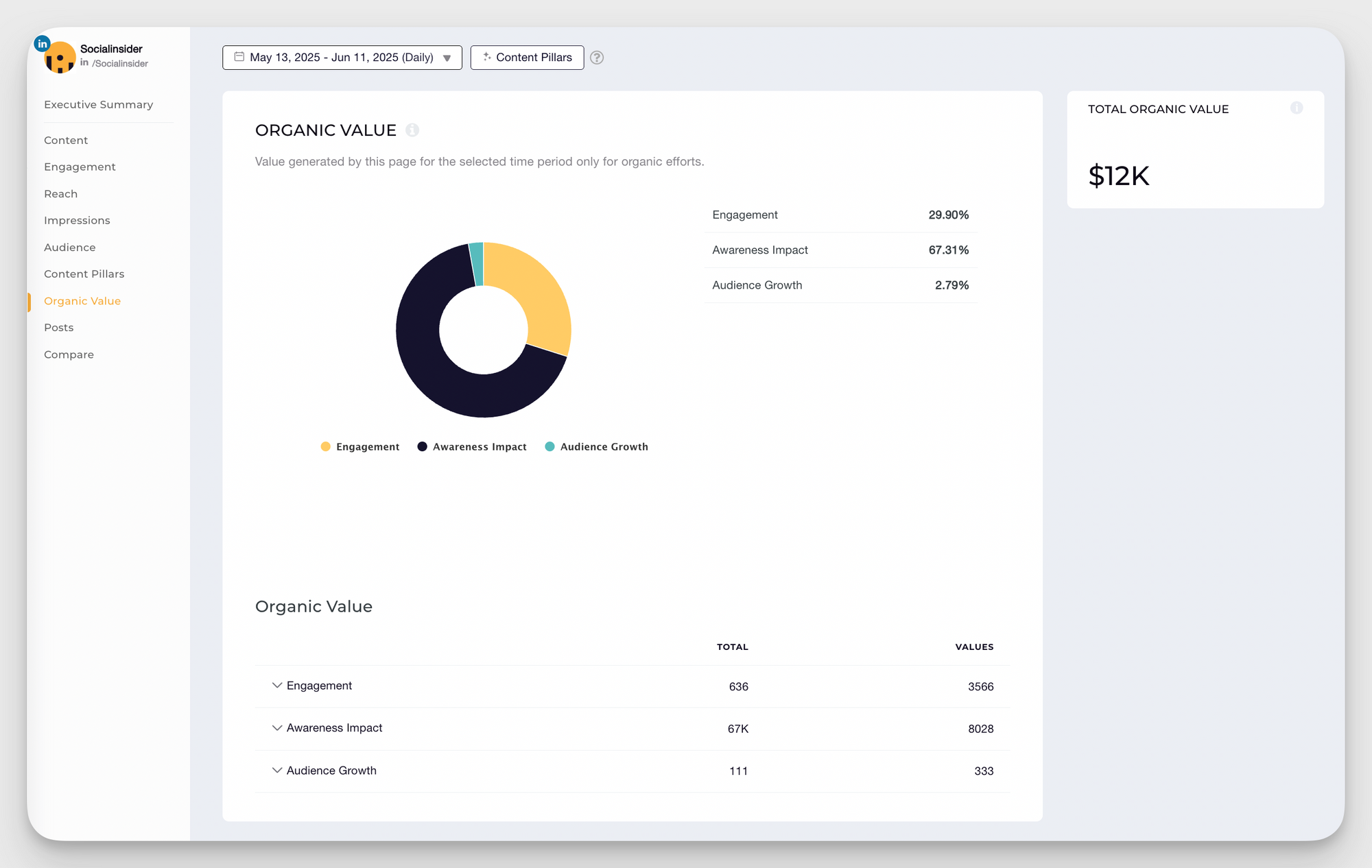
You can customize the Organic Value for your brand to reflect your industry’s typical advertising costs. Here’s how to configure it:
- Log in to your Socialinsider dashboard
- Click on the Settings icon
- Navigate to the Organic Value configuration

- Choose the social channels you want to track
- Assign values for different data types
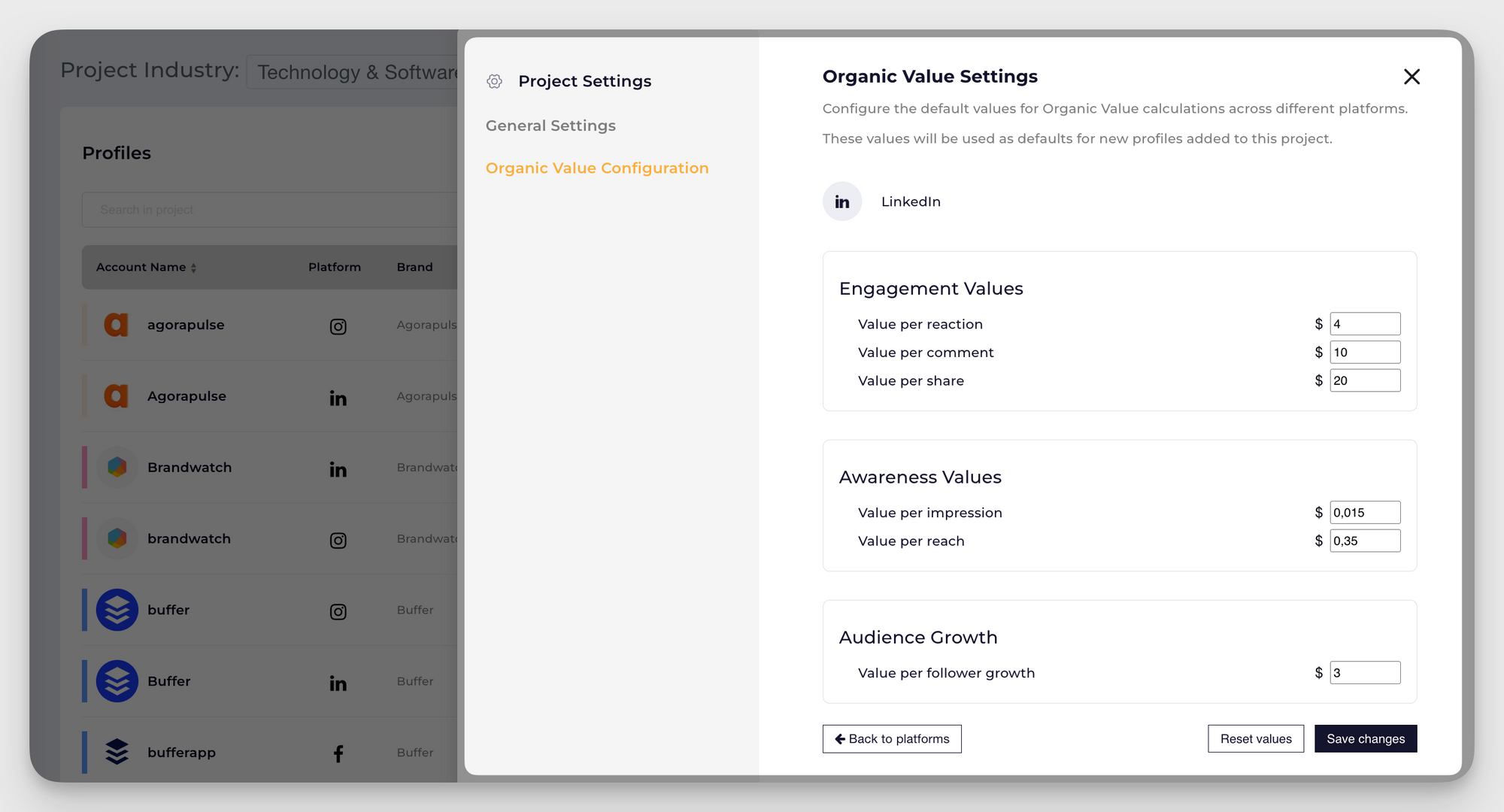
And that’s it. You’re ready to start tracking the Organic Value being generated by your brand’s social media content.
Here’s how a few seasoned experts are defining social media success for their brands:
I like to use a mix of quantitative measures like overall engagement, shares, saves, and link clicks, in combination with qualitative comments that show folks are understanding what we're sharing and are finding it useful. – Kate Meyers Emery, Sr Digital Comms Manager @ Candid
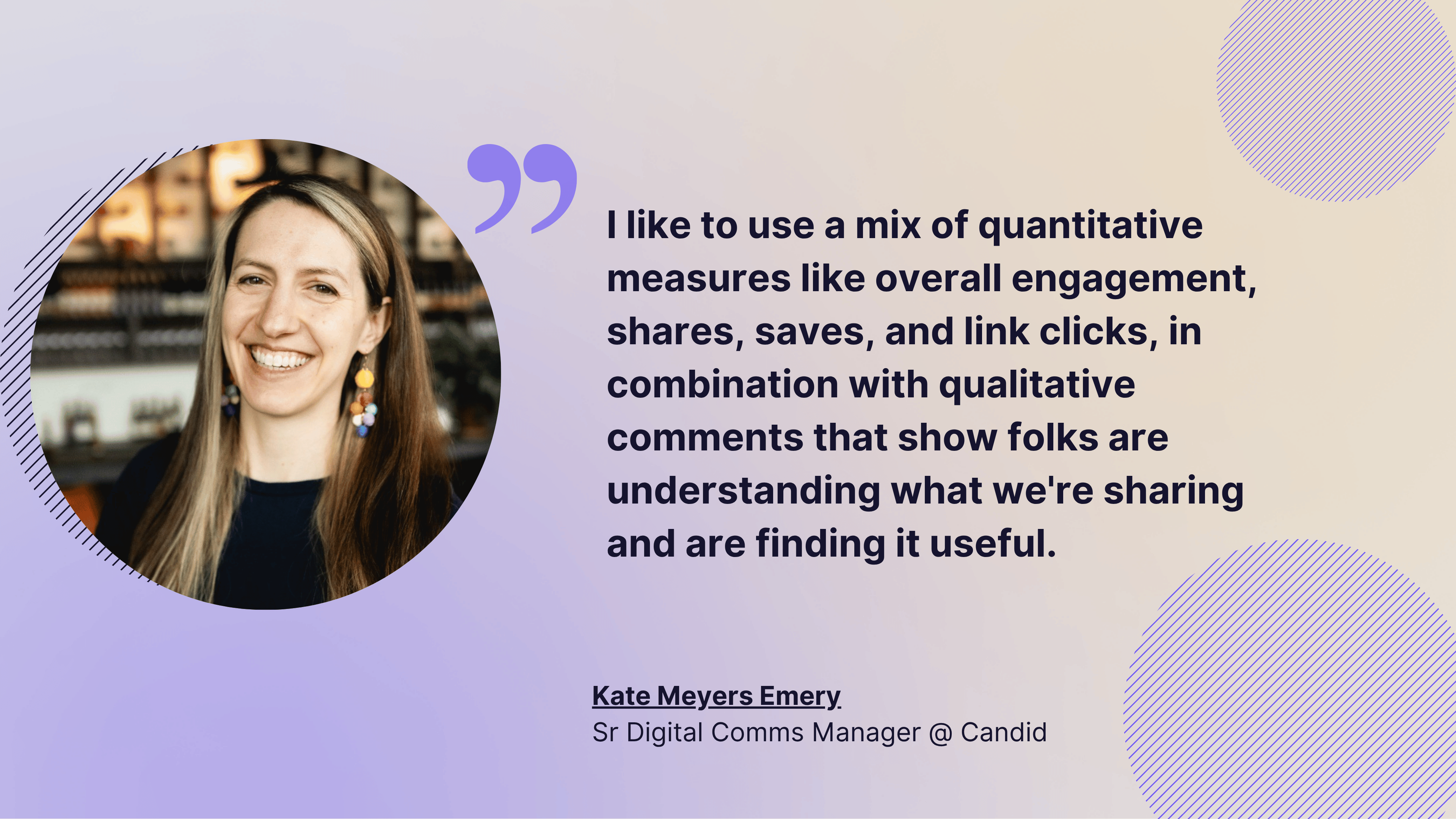
What really matters is the stuff that shows ACTUAL interest in what you're doing. Comments, DMs, shares, saves–signs of actual human life. If someone takes the time to send your post to the group chat, you know you're doing something right. – Chloe Birch, Freelance Social Media Manager
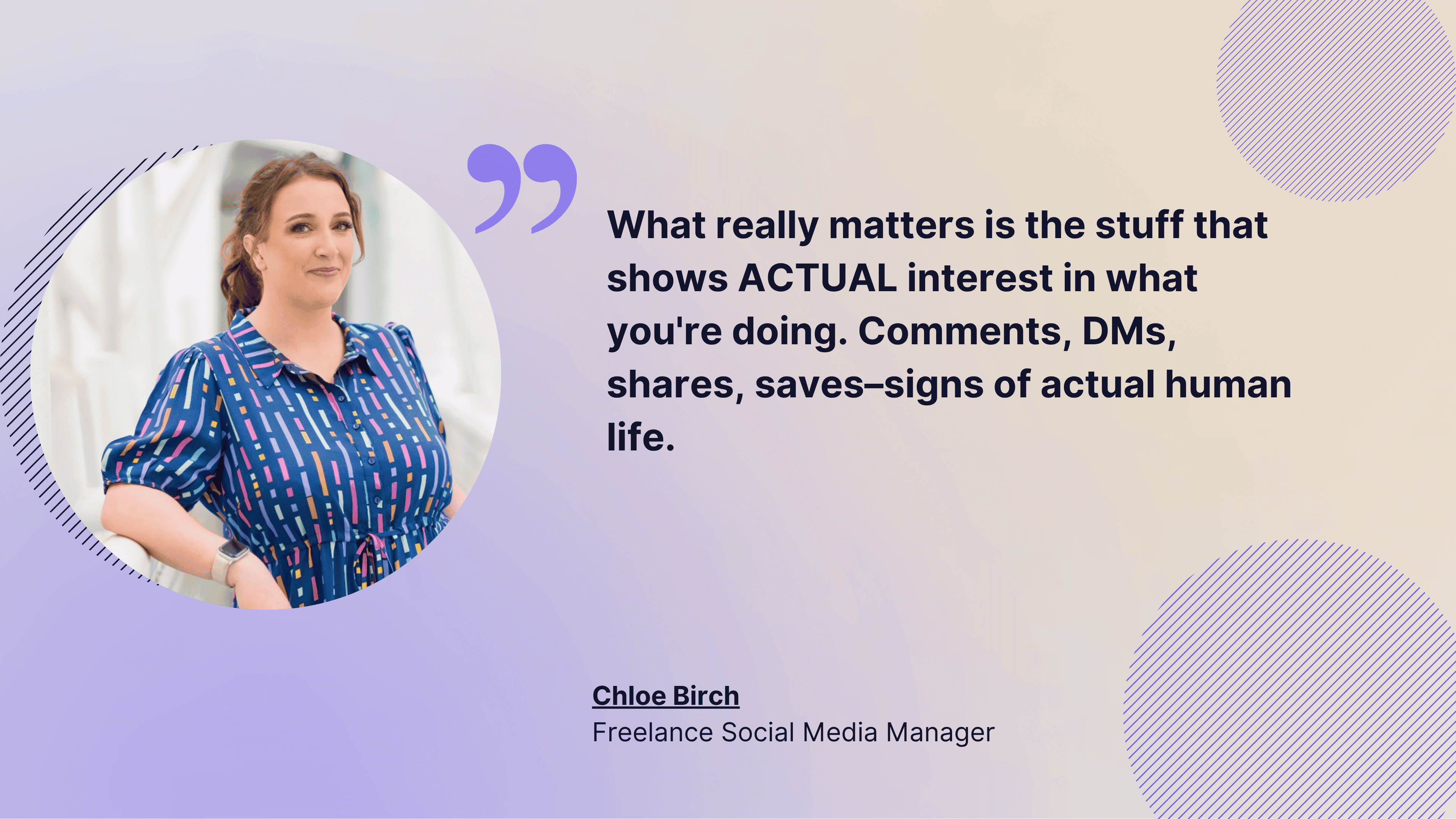
Personally, I pay close attention to saves and comments. Those give me insight into what’s truly resonating and what’s sparking real conversation. From a broader perspective, we also monitor overall engagement rate, follower growth, and content reach. – Kayla Miller, Social Media Manager
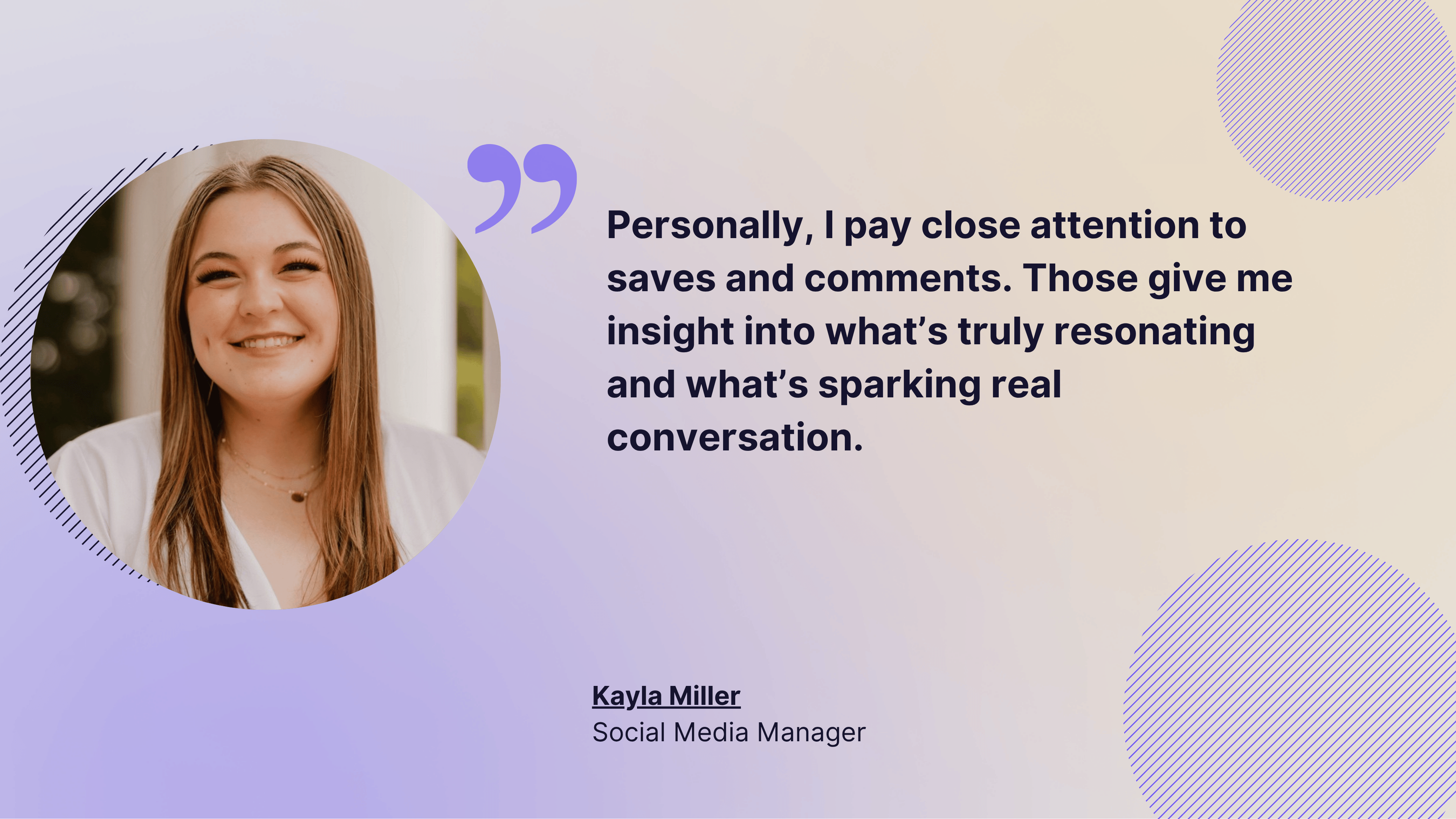
Design success-focused reporting and go beyond simple data collection
Once you've clearly defined what success looks like for your brand, the next step is to make sure your reporting actually goes beyond basic social media data collection and reflects those goals.
If your dashboard is just a monthly data dump of awareness and engagement metrics, it’s not doing its job. Tracking the wrong metrics, or tracking everything without context, will only lead to more confusion.
You should, of course, include the basic metrics like reach, impressions, engagement rate, and click-throughs in your report, but don’t just stop there. You also need to track the specific indicators that reflect your brand’s unique definition of success, whether that means building brand trust, generating leads, increasing customer loyalty, or driving conversions.
Here’s what to include in your success-focused dashboard:
- Compare performance over time (month-on-month, quarter-on-quarter, or year-over-year)
- Add context to data (Was there a spike because of a new content pillar or campaign launch? Was there an algorithm change that led to decreased engagement?)
- Track both quantitative (clicks, reach) and qualitative metrics (thoughtful comments, DMs, post saves)
For example, Ahrefs saw a spike in engagement during the second half of 2024.
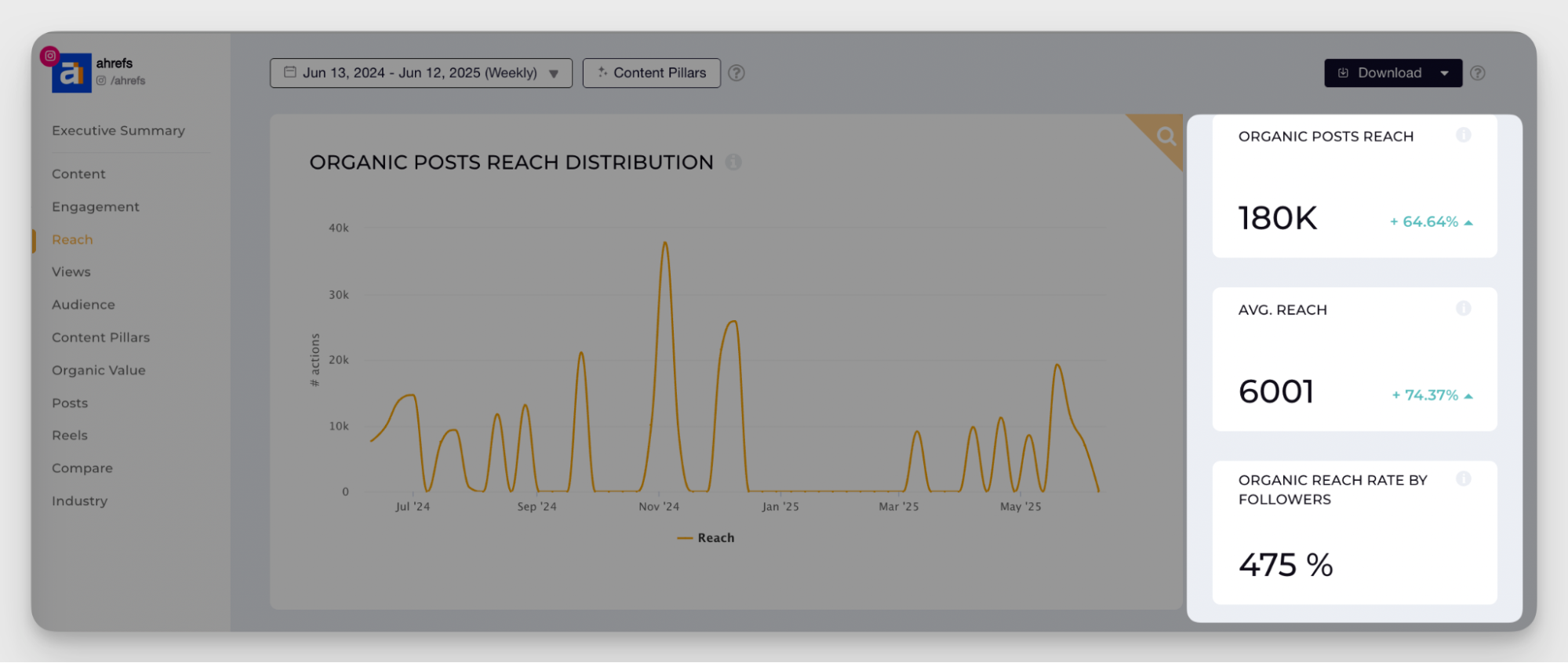
But it wasn’t random. When we look into the timeframe with the highest spike, we can see that all the posts in the time slot were related to their campaign #AhrefsEvolve.
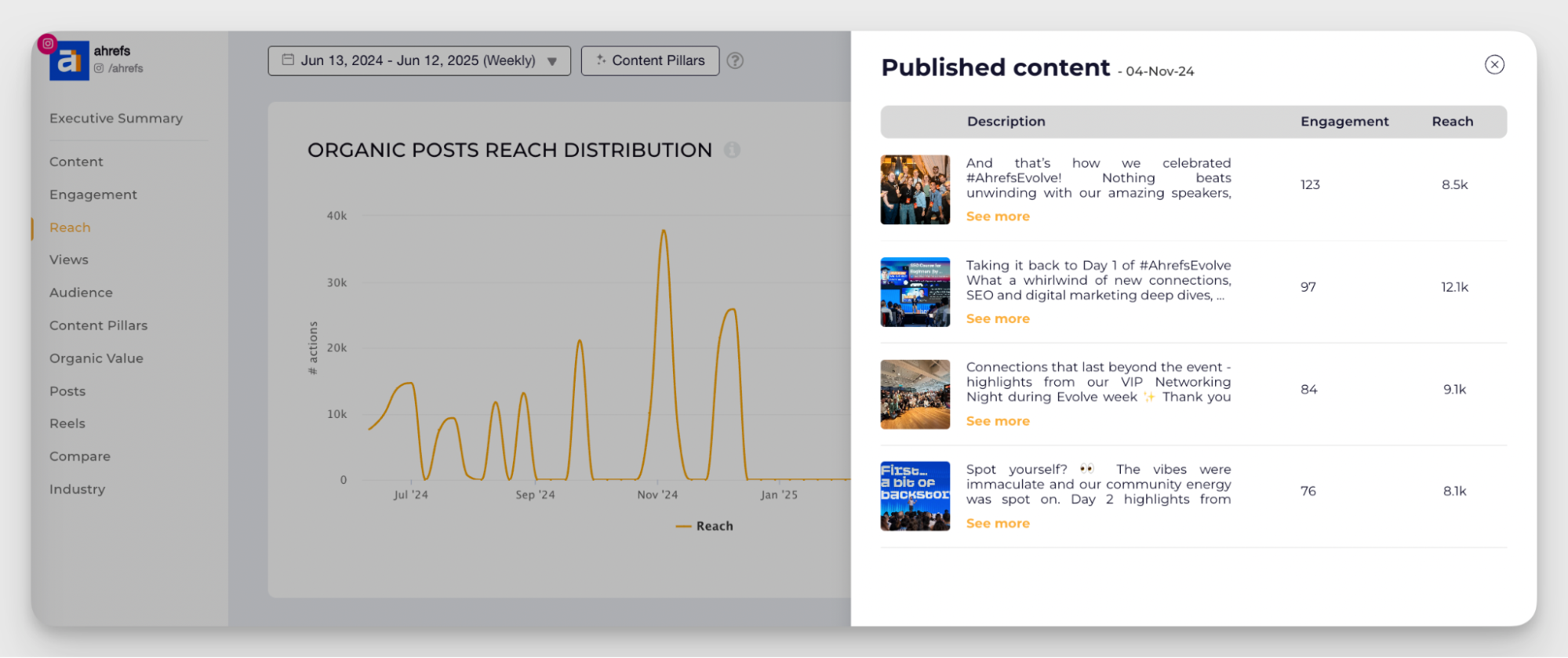
Here’s what the experts are saying about success-focused dashboards.
We look at a mix of qualitative and quantitative metrics, depending on the goal. Engagement rate shows us whether people are interacting and connecting with the content. Reach and impressions help us understand how far it’s travelling. Click-through rates tell us if we’ve sparked enough interest for someone to want to know more.
Beyond the numbers, we always closely monitor what people are saying in our DMs, mentions, and comments. – Yolandé Haynes, Content & Social Media Manager at For Everyone Group
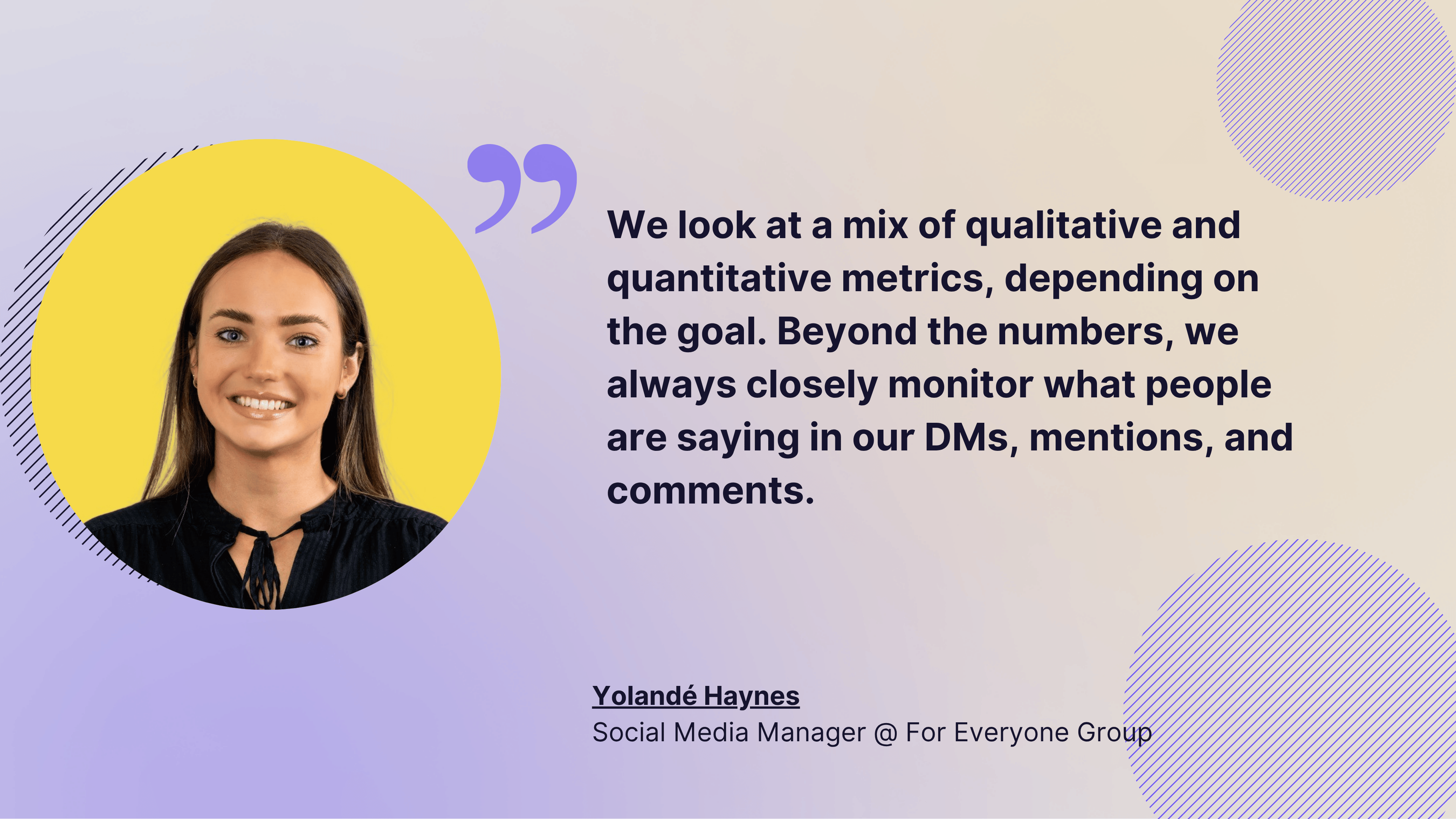
Going beyond vanity metrics, we track what I call 'You get me!' metrics - are people commenting with thoughtful insights? Saving the post? Sending it to someone? Sending a DM with more questions? These KPIs can easily fall off the radar when just doing your monthly dashboard reports, but they indicate content is resonating on an emotional level, not just getting views and likes.
On LinkedIn, we watch profile views, newsletter subscribers, and industries of people following you closely to ensure that as we grow an audience, it's growing in the right direction. - Brynne Krispin, Social media & thought leadership strategist
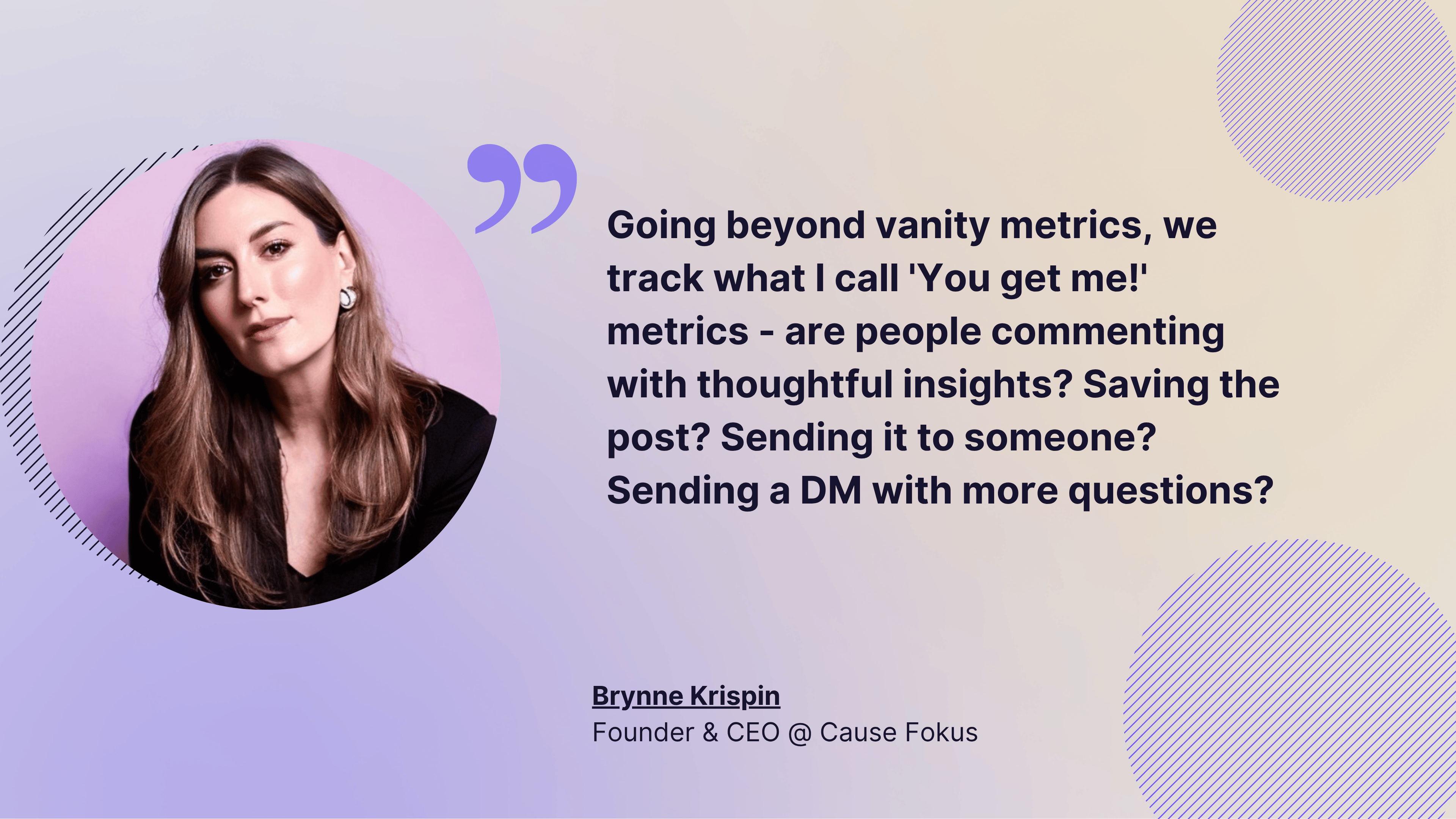
Create executive-level success summaries
While detailed dashboards are essential for day-to-day work, leadership teams don’t need or want to see every single data point. Clear and concise executive summaries can clearly showcase how your social media efforts are supporting broader business goals.
Your executive summary should focus on:
- Social media KPIs tied to business goals (such as conversion rates for the latest lead generation campaign);
- Top-performing content and why it worked;
- Any other insights tied to broader business outcomes (brand mentions, sentiment shift)
When you generate social media reports on Socialinsider, you’ll get an automatically generated summary with all the key insights from the selected time period, making it easier to identify what worked, what didn’t, and what to prioritize next.
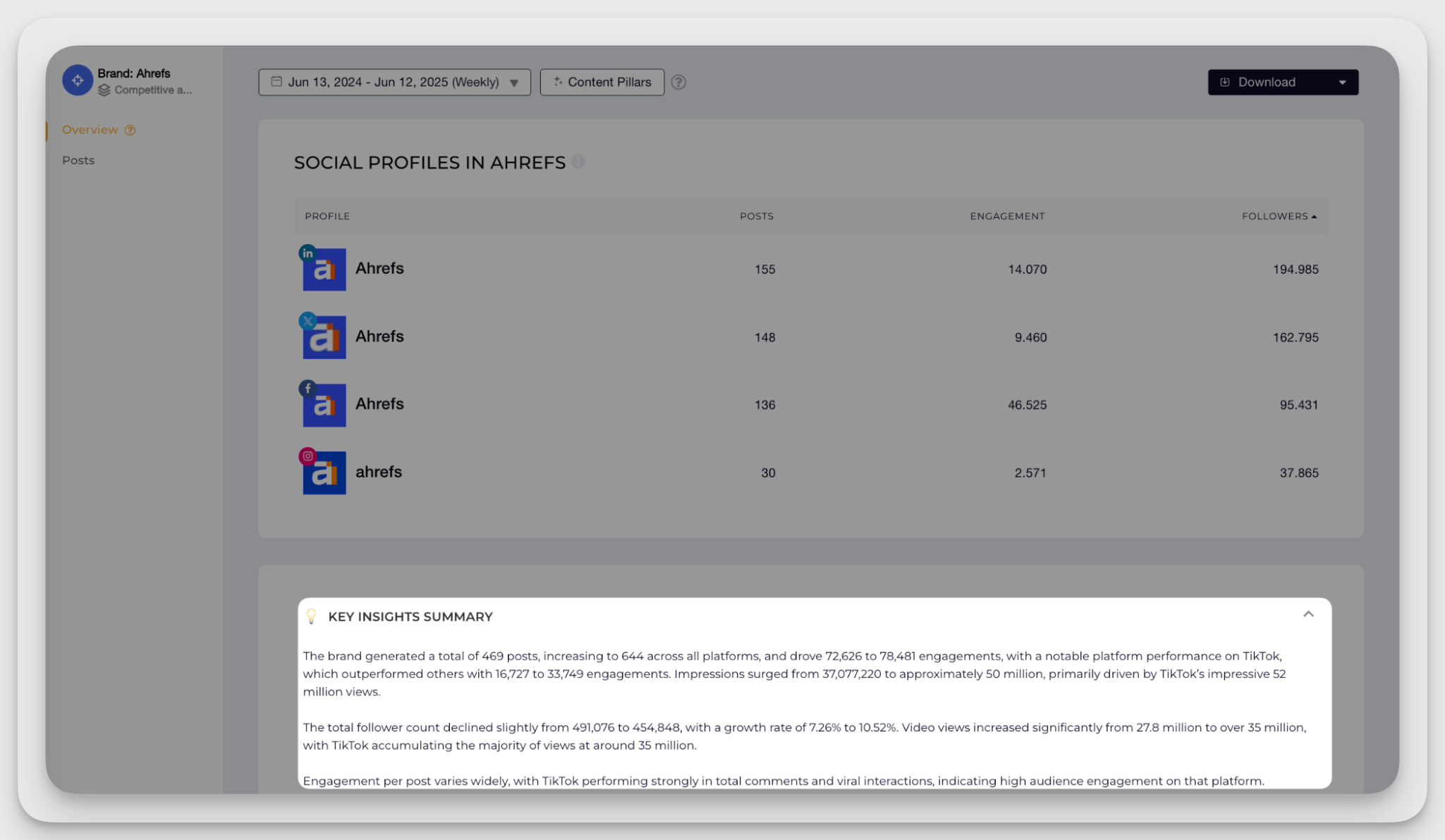
Maha Ayash, Managing Director - Head of UAE at Team Lewis, also takes a data-driven approach to social media success.
At TEAM LEWIS, we track a blend of metrics tailored to each campaign: reach and impressions to understand visibility, engagement rates to measure genuine interaction, and follower growth and click-through rates to see how our community is evolving.
Just as importantly, we focus on conversion metrics like leads, sign-ups, and sales to ensure our work drives meaningful business results. By combining these insights, we can deliver maximum value to our clients and support their broader business objectives.
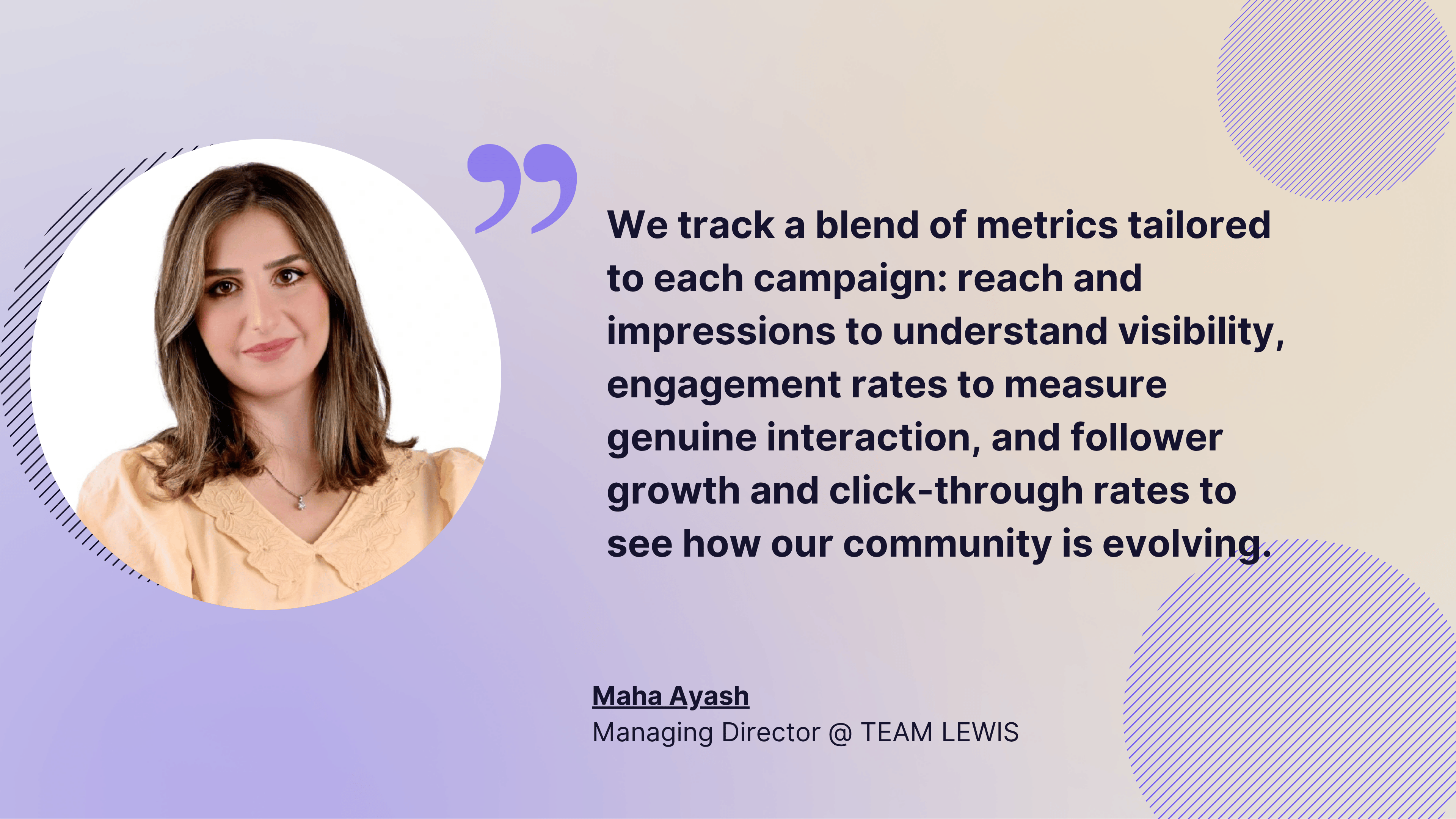
Track success with real-time vs. historical data
Tracking real-time performance gives you immediate feedback on what’s working right now, so you can adjust your campaigns quickly in case of any issues. But historical data is just as important for spotting trends, seasonality, and long-term growth.
For example, summer months may consistently show slower follower growth and engagement. Without this context, you might misread a seasonal dip as a bigger problem. But with historical data, you can adjust seasonal expectations and measure success more accurately.
However, some platforms, like Instagram, don’t provide access to historical follower growth through their APIs. While you can check follower data in native analytics tools, the lack of API access makes cross-platform analysis and benchmarking difficult.
Socialinsider solves this by creating historical estimates across platforms and helping you build more insightful social media reports.
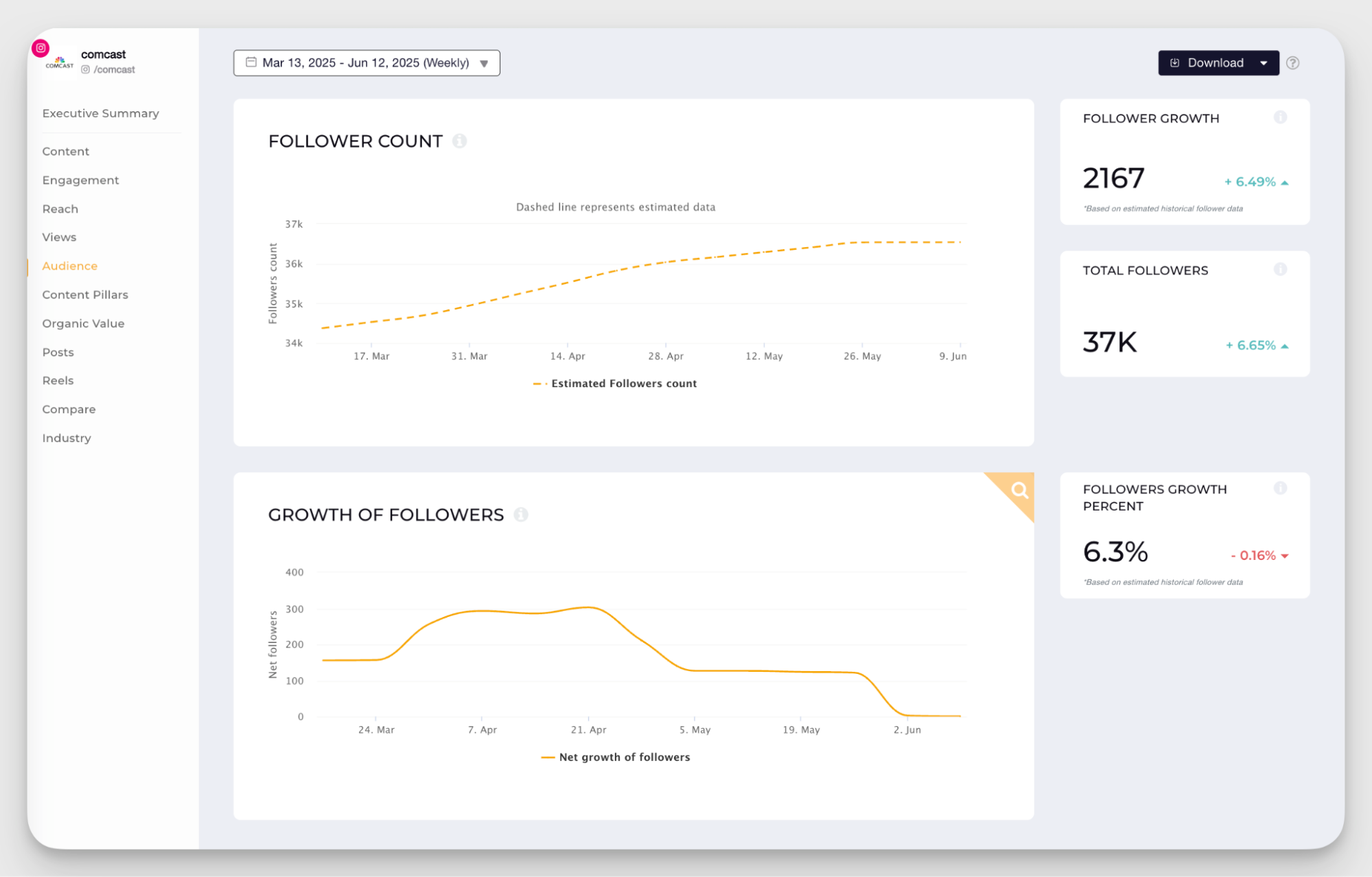
Maha Ayash also says:
Success on social media is about creating genuine connections, reaching the right people, and sparking real conversations. It’s not just about numbers, but about meaningful engagement that drives measurable results.
At TEAM LEWIS, we’re passionate about delivering creative, integrated campaigns that build brand awareness, nurture loyal communities, and make a tangible impact for our clients and causes. It’s all about embracing new trends, staying ahead, and setting fresh standards for social media excellence.
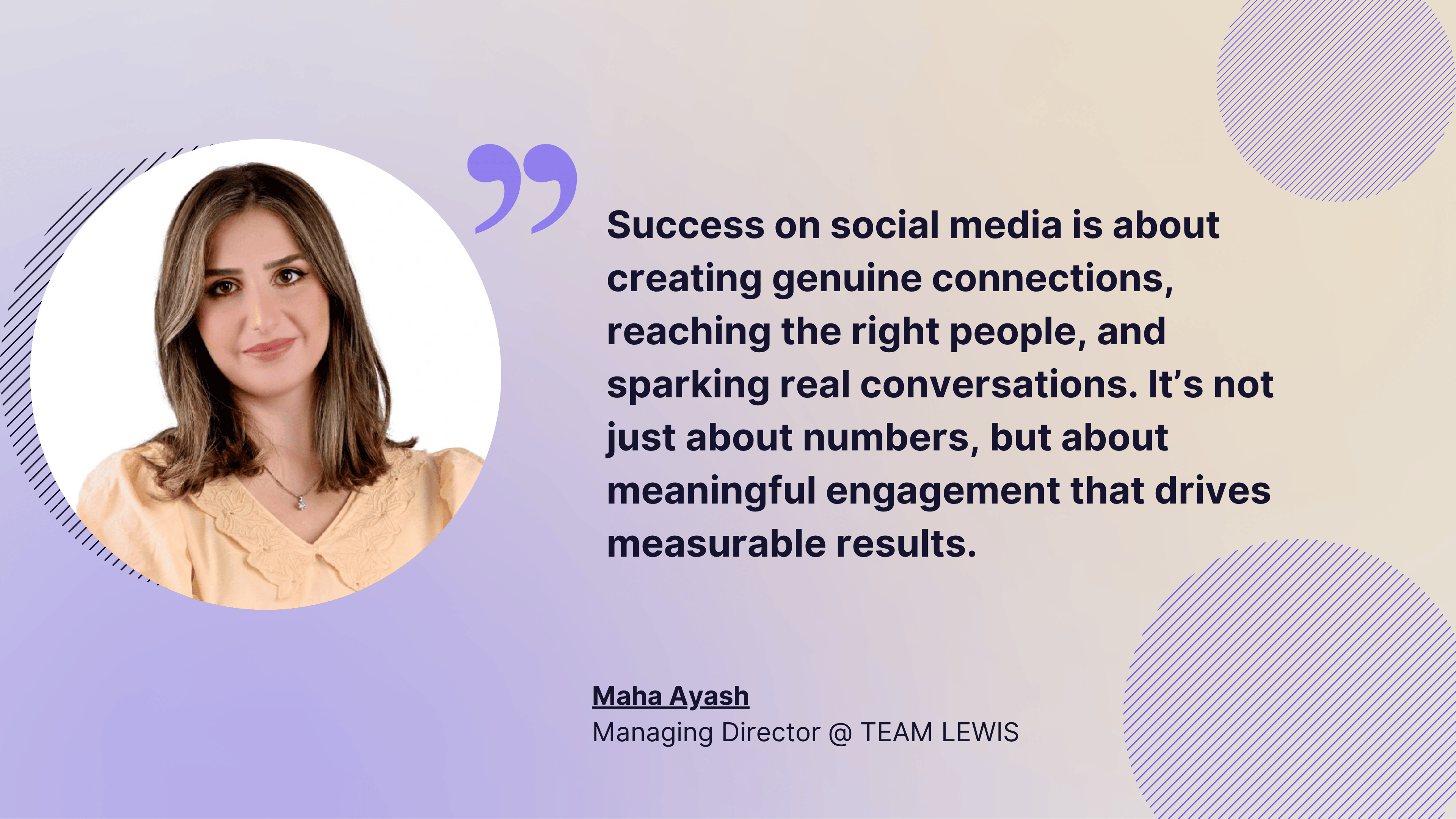
And Eric Stark, co-founder at Slate, also states:
Are we getting impressions, follower growth and engagement from our intended audience? Are people who come into our ecosystem referencing our social as a source of value? Those are the questions we ask of our content to define success.
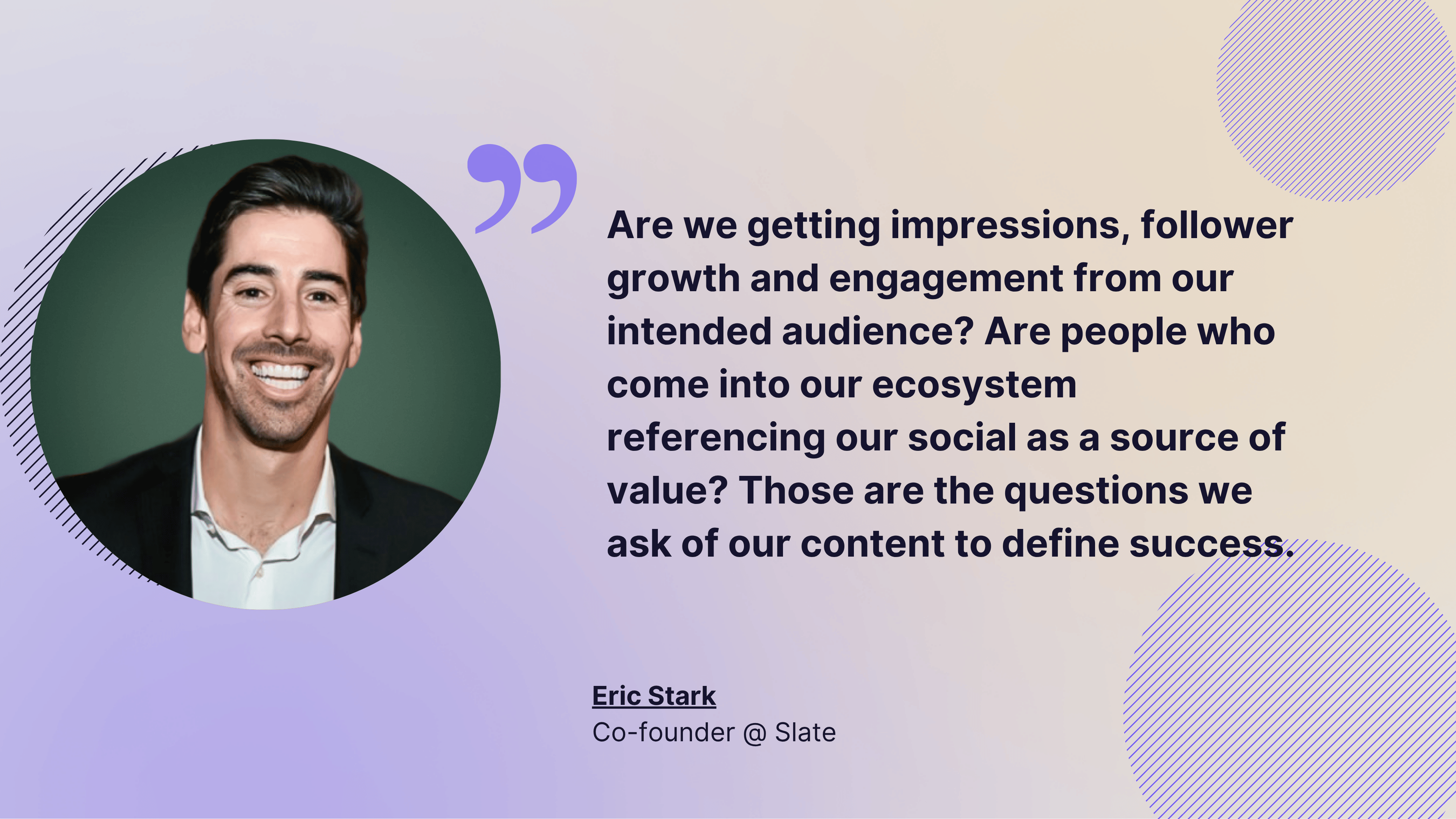
How to evaluate success based on different business goals
Success on social media doesn’t look the same for every brand, or even for the same brand at different stages. Let’s break down what social media success looks like across five common business goals and which metrics help you track progress.
Success for brand awareness goals
When your goal is brand awareness and you are focused on getting in front of the right audience, here are the key metrics you should track:
- Reach and impressions
- Video views and watch time
- Follower growth
- Brand mentions
- Share of voice
But not all visibility is created equal. When you’re tracking brand awareness, keep in mind that you need to look beyond the usual metrics.
Hristina Tsolova, a social media manager, explains how she approaches brand awareness reporting.
When it comes to clients looking for increased awareness, we will focus more heavily on metrics such as reach, follower growth, and brand mentions. More recently, the TikTok and Instagram algorithms have started rendering the followers metric obsolete, so for these particular platforms, follower numbers will begin to take lower priority.

Success for lead generation goals
With lead generation, you’re still trying to reach more people, but you also want them to take action.
Here are the metrics you can track for lead generation:
- Click-through rates (CTR)
- Landing page traffic from social media platforms
- Content downloads or form fills
- Email sign-ups
- Number of leads attributed to social media campaigns
Hristina highlights how defining clear goals from the start helps customize social strategies.
Whether it's brand awareness, lead gen, sales, or employer branding, we define these objectives with input from our clients, and we then translate them into broad social strategies for each channel, producing content that focuses on the desired result. Success is heavily underpinned by strategic planning and aligning social activity with business goals, instead of chasing virality at every corner.
Success for customer retention goals
Your customer retention metrics should reflect how well your brand listens, responds, and delivers value for your existing customers.
Brooke B. Sellas, Founder at B Squared Media, calls this approach “Return on Conversation” (ROC).
Focusing on their needs and interests will help you build trust through honest communication, which, in turn, will encourage more meaningful engagement and long-term growth for your community.
For us, success on social media is measured by Return on Conversation (ROC). It’s not about reach or likes, but how effectively we turn social interactions into meaningful business outcomes. It’s about using social media as a customer experience (CX) channel, not just a content distribution platform.
At B Squared Media, we believe conversations are currency. So, success means building relationships that drive loyalty, influence purchasing decisions, and ultimately impact revenue. If our content sparks dialogue, our service earns trust, and our team creates a connection? That’s how we measure success.
We also asked her what metrics she tracks for defining success on social media, and here are her insights:
We focus on conversation-ready and conversion-minded metrics, including:
- Conversation rate (comments and replies per post)
- Response time and response rate (for social customer care)
- Sentiment trends and language shifts
- Click-through and conversion rates
- Intent signals (like question volume, product mentions, and direct inquiries)
- Customer satisfaction (CSAT) from social interactions
- Share of voice and competitive insights (via social listening)
All of these feed into our Return on Conversation framework, which measures how well social media drives meaningful outcomes, not just impressions.

Success for sales goals
Sales-focused metrics can be tricky to track from social media platforms, which is why attribution is key. Even indirect signals, like increased branded search or replies with purchase intent, can indicate impact on the sales funnel.
To measure sales success from social, consider these social media metrics:
- Website conversions from social traffic;
- Clicks to product pages;
- Demo bookings or sign-ups;
- Promo code usage;
- Survey responses about how they discovered your brand.
Magali Mas D'Amato, Founder at Cult Leaders, explains:
For awareness, we focus on volume of mentions, sentiment, and how many conversations we’re generating. If the goal is conversion or sales, we’ll shift towards tracking traffic to specific landing pages, click-through rates, and engagement with key content.
There’s no universal metric that defines success across the board - it’s all about being clear on your objectives and using the data that best reflects whether you’re moving in the right direction.
Ultimately, meaningful measurement comes from aligning metrics with purpose and making the most of the tools and resources we have at hand.

Jack Appleby, Social Media Consultant, gives his own take on it.
Now let's be real—it'll never be as simple as ‘this social post caused a consumer to buy!’ As long as I've been doing this, we still don't have the greatest ROI tracking in this industry.
But, you can certainly combine sales data with social data to see where the upticks happen, how much ad spend's going vs. how much content you're producing, and piece together the business case for how your social's driving sales.

Similarly, at Socialinsider, we gather customer metrics through a survey for our customers, where we ask them where they have heard about us. This way, we are able to attribute the impact of social media on the entire marketing funnel.

Success for community-building goals
Community building is all about improving connections and customer loyalty. Your focus should be on building quality relationships with customers, rather than just increasing reach.
Here are the success metrics you can consider for this:
- Engagement rate
- Number of comments, replies, and shares
- Volume and tone of mentions
- Participation in campaigns or hashtags
As Hristina points out:
We're in an era where social media managers and agencies often hear ‘can you make it go viral’ from clients, and virality is often considered the ultimate measure for success. But we've found that virality without community means very little. Also, when it comes to goals like community building and strengthening your employer brand, engagement metrics are key–specifically, engagement rate, comments, and mentions. It encourages conversations and engagement with your target audience and goes hand in hand with building a relationship with them.

Success analysis of competitors
Just measuring your own performance is not enough. You also need to know how your brand’s performance stacks up against the competitors to spot who is leading the social media game, who is lagging behind, and what opportunities you can take advantage of.
Take a look at the different ways to analyze competitor success.
Success benchmarking against direct competitors
Benchmarking involves comparing your performance to brands that offer similar products/ services to yours. Start by identifying 3-5 direct competitors of your brand and then compare key metrics like:
- Engagement rate
- Posting frequency
- Follower growth
- Top-performing content themes
- Format mix (Reels, carousels, polls)
Socialinsider simplifies this process through its benchmarking feature. It allows you to track your competitors’ performance side-by-side, and analyze top content pillars, engagement trends, and growth patterns—all in one dashboard. You get a clear, data-backed view of your social media positioning so you can make smarter strategic moves.

Competitor market share analysis
Market share analysis helps you understand how much of your industry’s total social media performance is owned by your brand.
Unlike benchmarking, which looks at side-by-side comparisons of specific metrics, market share analysis focuses on your overall slice of the pie. It measures how much visibility and engagement your brand holds relative to the total competitive landscape.
You can track metrics like:
- Percentage of total engagement across competitors
- Branded hashtag usage compared to others
- Cross-platform presence and performance
Competitor share of voice success tracking
Share of voice measures the market conversation that your brand owns, versus your competitors. It helps understand brand awareness, thought leadership, and campaign impact.
For example, if a competitor launches a new product and you notice a spike in branded hashtags or increased mentions of their brand across social media, it could indicate a strong share of voice.
You can measure the share of voice using:
- Branded and unbranded mentions
- Hashtag usage (owned and community-driven)
- Brand tagging and UGC volume
- Sentiment analysis
Competitive gap analysis and opportunity identification
The final step is to identify gaps in your competitors’ strategies based on all the information you have gathered so far. The competitive analysis should reveal:
- What are your competitors doing that you’re not?
- What are you doing better than them (and should double down on)?
- Where audience needs aren’t being fully met?
For example, Socialinsider’s competitive analysis report reveals that Semrush consistently drives higher engagement than Ahrefs.

This is influenced by several factors, such as:
- Semrush posts more frequently, which increases its visibility and touchpoints with its audience.
- Among the top three content pillars for each brand, there’s an overlap for only two of them. That means the brands are leaning into slightly different content themes.

How to optimize your strategies to reach social media success
Now’s the time to optimize your social media strategy based on the data you have collected so far, including your success metrics, industry benchmarks, and competitor analysis.
Here are the key ways to optimize and continuously improve to reach social media success.
Measure KPIs to get insights for performance enhancement
Before you can optimize anything, you need to understand what your KPIs are telling you.
To gather real insights from KPIs, look into these questions for each key metric:
- What does this KPI tell me about audience behavior?
If more people are saving your educational content, then it might be a sign to lean further into educational formats. - What trends are we seeing over time?
If your engagement rate is steady but social media reach has been dropping over the past quarter, it could indicate platform algorithm shifts or a need to boost content distribution. - Is KPI even connected to a business goal?
There’s no point even celebrating high impressions on your posts if they don’t drive web traffic, form submissions, or deeper engagement.
These insights will form the basis for everything that comes next—from what you test, to what you scale, to what you replicate.
According to Magali Mas D'Amato, Marketing Consultant:
Real success comes when our community is actively engaging with us - commenting, sharing, contributing, and becoming genuine advocates for the brand. It’s when social becomes more than a channel; it becomes an experience.

Optimize for success through A/B testing
A/B test different headlines, CTAs, post formats, hashtags, or even posting times to learn what resonates best with your audience. Keep in mind to always test one variable at a time when running A/B tests on social media, and make sure your test runs long enough to gather meaningful data.
Scale successful campaigns and content types
Look at your most impactful campaigns and content formats to analyze what has really connected the most with your audience. Don’t just focus on the one-off viral posts. Instead, look into the campaigns that have reliably delivered engagement, shares, or conversions over a long period of time.
For example, on Semrush’s Instagram, Reels are the best-performing content types. Rather than splitting focus across underperforming content types, the brand could lean into what’s already working for them to improve visibility and brand recall value.

Spot success patterns and replicate them
Use analytics tools like Socialinsider to pull a list of posts with the highest engagement rate, saves, shares, or click-throughs over a given timeframe (monthly or quarterly).
Once you’ve identified your top-performing posts, look for recurring patterns. If several posts with similar structures or topics consistently perform well, that’s your pattern.
Document these patterns and turn them into a repeatable formula to guide future content.
Kayla Miller shares her own insights about it.
For me, success looks like someone taking the time to comment thoughtfully or save a post because it genuinely helped or inspired them. That tells me the content did its job.

Final thoughts
Remember, measuring social media success isn’t just about tracking numbers; it’s about proving impact. By defining clear goals, choosing the right metrics, and spotting patterns, you can turn data into valuable insights.
Socialinsider helps marketers dig deeper with competitor benchmarking and engagement insights, which makes performance reporting more strategic and actionable.
Analyze your competitors in seconds
Track & analyze your competitors and get top social media metrics and more!
You might also like
Improve your social media strategy with Socialinsider!
Use in-depth data to measure your social accounts’ performance, analyze competitors, and gain insights to improve your strategy.




